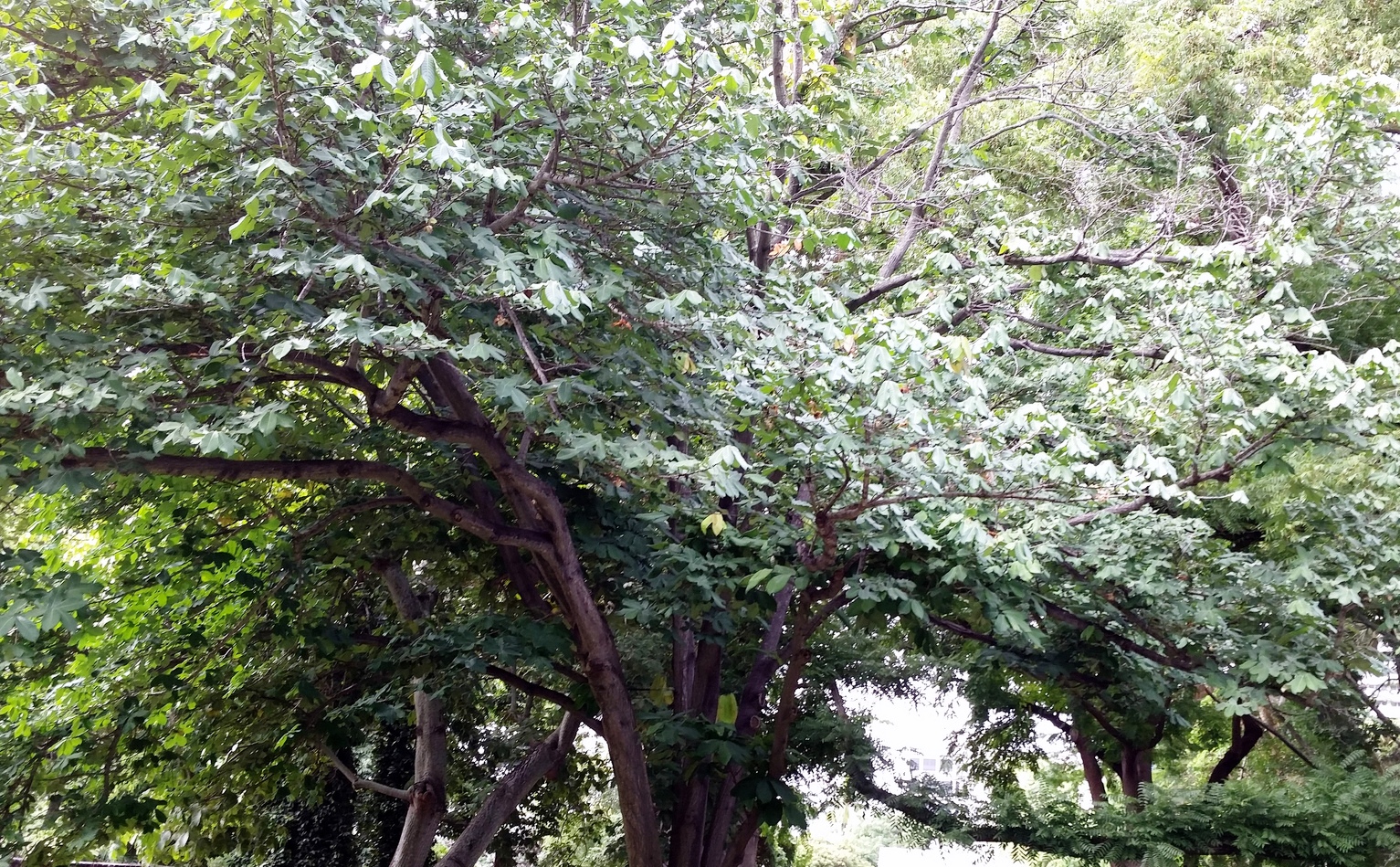Monodora myristica

|
|
Monodora myristica Common Names: Calabash Nutmeg, African Nutmeg,
Jamaican Nutmeg Scientific
Classification Kingdom: Plantae Clade: Tracheophytes Clade: Angiosperms Clade: Magnoliids Order: Magnoliales Family: Annonaceae Genus: Monodora Species: M. myristica Synonyms: Annona myristica Gaertn., Monodora borealis Scott-Elliot, Monodora claessensii De Wild., Monodora grandiflora Benth. Morphological Description Monodora myristica is a tropical evergreen tree in the Annonaceae family,
typically growing 15–35 m tall with a trunk diameter up to 2 m at breast
height. Its key features include: · Habit: Tall tree with a straight trunk and horizontal branching,
forming a dense canopy. · Bark: Greyish-brown, smooth when young, becoming fissured with
age; used medicinally (Burkill, 1985). · Leaves: Alternate, simple, elliptic to oblong, 20–45 cm long, 10–20
cm wide, leathery, glossy dark green, with a drooping habit (Keay, 1989). · Flowers: Solitary, large (up to 25 cm across), pendulous, fragrant;
outer petals 10 cm long, red-spotted with curled margins, inner petals forming
a yellowish cone (Burkill, 1985). · Fruit: Spherical, 15–20 cm in diameter, greenish-yellow when ripe,
with a woody shell; contains numerous aromatic seeds embedded in white, oily
pulp (Keay, 1989). The seeds’ nutmeg-like
scent distinguishes it within the genus (Agiriga, 2023). Distribution and Habitat Monodora myristica is native to tropical West and Central Africa, with a range
extending eastward: · Countries: Sierra Leone, Liberia, Ghana, Nigeria, Cameroon, Angola,
Uganda, western Kenya, Tanzania. · Introduced: Caribbean islands (e.g., Jamaica) via 18th-century slave
trade; Bogor Botanical Gardens, Indonesia (1897) (Burkill, 1985). It thrives in lowland
evergreen rainforests, often at elevations below 1,000 m, preferring humid
climates and well-drained, fertile soils (Keay, 1989). Ethnopharmacology Monodora myristica, commonly known as African nutmeg or Calabash nutmeg, possesses
diverse medicinal properties and is widely used in traditional African
medicine. It exhibits potent antimicrobial, anti-inflammatory, analgesic,
antioxidant, anti-diabetic, antimalarial, antipyretic, and anti-hypertensive
activities. Traditionally, it is utilized to treat gastrointestinal disorders,
infections, arthritis, rheumatism, diabetes, fevers, and malaria symptoms, and
is also valued for its aphrodisiac and cognitive-enhancing effects. The
bioactive compounds responsible for these health benefits include alkaloids,
flavonoids, tannins, terpenoids, phenolics, and essential oils. While generally
safe in moderate amounts, it should be used cautiously to prevent potential
adverse effects from excessive intake, and further research is needed to fully
explore and substantiate its medicinal efficacy. · Antioxidant: Seed extracts in Nigeria treat oxidative stress. Moukette et
al. (2015) found phenolic compounds (e.g., caffeic acid, myristicin) with DPPH
IC₅₀ of 25 μg/mL, protecting against free radicals. · Antimicrobial: Seed oil in Ghana fights infections. Adewole et al. (2023)
identified a novel compound inhibiting DNA gyrase (IC₅₀ 15 μM) in Escherichia coli and Staphylococcus aureus. · Analgesic: Bark decoctions in Cameroon relieve headaches. Burkill
(1985) notes its use, possibly linked to β-caryophyllene in essential oils (Akise
et al., 2012). · Stomachic: Seeds in Ivory Coast aid digestion. Traditional use aligns
with carminative effects of volatile oils (Agiriga, 2023). · Insect Repellent: Ground seeds in Nigeria deter insects. Akise
et al. (2020) confirmed repellent activity due to α-pinene and β-caryophyllene. Phytochemicals include
myristicin, caffeic acid, β-caryophyllene, α-humulene, and α-pinene, driving
its therapeutic potential (Moukette et al., 2015; Akise et al., 2020). ⚠ Toxicity Profile: High doses of seed oil (5 g/kg in rats) caused hepatotoxicity and
CNS depression. Myristicin may induce hallucinations or convulsions at >500
mg/kg. Pregnant/breastfeeding women should avoid due to unstudied risks.
Consult a healthcare provider before use (Agiriga, 2023; Onikanni et al.,
2023). Additional Uses · Culinary: Seeds used as a spice in West African stews, soups, and
desserts, mimicking nutmeg (Burkill, 1985). · Timber: Hardwood for carpentry, house fittings, and joinery (Keay,
1989). · Craft: Seeds crafted into necklaces in Nigeria (Burkill, 1985). References
More Pictures |
|
| Compounds of Monodora myristica | |
| References |